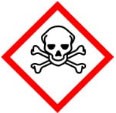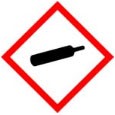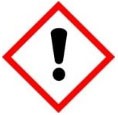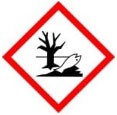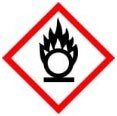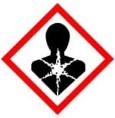Control of Substances Hazardous &, Labelling
Using chemicals or other hazardous substances at work can affect people’s health. The Control of Substances Hazardous to Health Regulations (COSHH), Classification, Labelling and Packaging (CLP), Registration, Evaluation, Authorisation & restriction of Chemicals (REACH) were introduced to minimise the risk of ill health from the exposure to hazardous substances whilst at work. Whenever reasonably practicable, exposure to any hazardous substances should be avoided.
If avoiding exposure is not possible, explore how exposure can be controlled by substitution, isolation, proper training and good housekeeping. Where exposure cannot be adequately controlled by these means, appropriate Personal Protection Equipment (PPE) will need to be issued.
In most organisations, some hazardous substances will be used even if it is just cleaning products. If this is the case then the organisation must comply with the requirements of the current COSHH Regulations 2002 (as amended).
What do they cover?
COSHH covers substances that are hazardous to health. Substances can take many forms and include:
- Chemicals
- Products containing chemicals
- Fumes
- Dust
- Vapours
- Mists
- Nanotechnology
- Gases and asphyxiating gases and
- Biological agents (germs). If the packaging has any hazard symbols then it is classed as a hazardous substance
- Germs that cause diseases, such as leptospirosis (Weils Disease) or legionnaires disease and germs used in laboratories
There are a number of hazardous substances that do not fall under COSHH:
- Asbestos
- Radioactive substances
- Lead
The three examples above have their own regulations.
Duties placed upon organisations
The COSHH regulations place the following duties on an organisation:
- Assess the risks - involves identifying all the hazardous substances present and considering the risks these substances present to people's health
- Decide what precautions are needed - work must not be carried out which could expose employees to hazardous substances without first considering the risks and the necessary precautions, and what else is needed to comply with COSHH
- Prevent or adequately control exposure - exposure to hazardous substances must be prevented but where this is not reasonably practicable, adequately controlled
- Ensure that control measures are used and maintained - it is necessary to ensure that any controls are used and maintained properly and that safety procedures are always followed
Monitor exposure if necessary
In certain circumstances, it is necessary to monitor an employee’s exposure to hazardous substances if:
- there could be serious risks to health if control measures fail
- exposure limits might be exceeded
- control measures may not be working
Carry out appropriate health surveillance
Appropriate health surveillance needs to be carried out if the assessment identifies this as necessary or where COSHH sets specific requirements.
Prepare plans and procedures to deal with accidents, incidents and emergencies
Suitable procedures need to be in place to deal with adverse situations in relation to hazardous substances.
Ensure that employees are properly informed, trained and supervised
Employees should be given suitable and sufficient information, instruction and training in relation to the hazardous substances they may be exposed to.
In order to assess the risk and decide what control measures are required it is necessary to gather sufficient information about the hazardous substances. Safety Data Sheets must be available for all chemical products. These are information sheets that must be supplied for all chemical products classified as hazardous according to the criteria specified by the Chemicals Hazard Information and Packaging for Supply (CHIP) Regulations 2002 (as amended).
CLP Regulation
The European Regulation (EC) No 1272/2008 on Classification, Labelling and Packaging of substances and mixtures, (CLP) came into force in all EU member states, including the UK, on 20 January 2010.
The CLP Regulation:
- Adopts in the EU the Globally Harmonised System (GHS) on the classification and labelling of chemicals which applies directly in all EU member states. This means that no national legislation is needed but is overseen by the European Chemicals Agency (ECHA) which has been replaced the Chemicals (Hazard Information and Packaging for Supply) Regulations 2009 – CHIP on 1 June 2015
The intention of the CLP Regulation is very similar to CHIP. Substances and mixtures that are placed on the market should be classified, labelled and packaged appropriately. But, because CLP adopts the GHS, in time, the same classifications and labelling will be used throughout the world.
International Symbols
Although the CLP hazard pictograms are very similar to the CHIP hazard symbols, they have a new shape, new design and a new colour. A brief description is given here for information only.
|
Acute toxicity, Very toxic (fatal), Toxic etc. |
Gasses under pressure |
Harmful skin irritation, serious eye irritation |
|
Flammable gasses, liquids, solids, aerosols, organic peroxides, self-reactive, pyrophoric, self-heating, contact with water emit flammable gas |
Explosive, self-reactive, organic peroxide |
Harmful to the environment |
|
oxidising gases, liquids and oxidising solids
|
Respiratory sensitiser, mutagen, a carcinogen, reproductive toxicity, systemic target organ toxicity, aspiration hazard |
Corrosive (causes severe skin burns & eye damage), serious eye damage |
Hazard statements
New hazard statements will replace CHIP risk phrases.
Precautionary statements
New precautionary statements will replace the CHIP safety phrases.
Signal word
The CLP introduces a new requirement for labelling – a signal word, either “warning” or “danger” depending on the severity of the hazard.
New duties
There are also new duties such as the notification of new substances to the Classification and Labelling Inventory.
CLP guidance
ECHA (European Chemical Agency) oversees the CLP Regulation and has published a suite of guidance to help you comply with the Regulation. see link below
https://echa.europa.eu/regulations/clp/understanding-clp
Businesses are encouraged to look at this guide to understand new and changing duties.
UK CLP Helpdesk
Further assistance can be provided by the UK's national CLP Helpdesk at the following email address UKREACHCA@hse.gov.uk
REACH is a European Union Regulation concerning:
the Registration, Evaluation, Authorisation & restriction of CHemicals
REACH aims to fill a gap in what we know about the chemicals used every day in industry and in consumer products. It takes a broad view of chemical use and places new duties on businesses depending on where they sit in the supply chain.
One of the main new systems set up by REACH is called ‘Registration’. Companies that manufacture chemical substances or import them into Europe, either on their own or mixed together to make chemical products, are at the top of the European supply chain. These companies must ‘register’ a dossier of technical information about each substance that they manufacture or import above a tonne a year, with the ECHA in Helsinki.
If a business purchases chemicals within Europe, or in quantities below a tonne a year, it will not have to take part in the new REACH ‘Registration' system.
REACH should result in more information being passed down the supply chain to users. For example, safety data sheets will give more information about the exposure scenarios and risk management measures that should be taken when using a product.
In time, REACH will result in some particularly hazardous substances being taken out of use altogether, and some will have to be specifically authorised for use.
REACH is a complex new system, and companies who manufacture, import, sell, or use chemicals should find out more.
What do businesses need to do?
- Plan for the effects of REACH and CLP
- Understand their position in the supply chain and take any appropriate action
- Understand the potential impact of any changes in classification
- Ask suppliers for feedback
- Check the information on the safety data sheet
- Make sure risk assessments are up to date
More information is available at https://www.hse.gov.uk/reach/
Further information can also be found by visiting the links below on the HSE Website:
Welding - https://www.hse.gov.uk/coshh/essentials/direct-advice/welding.htm
